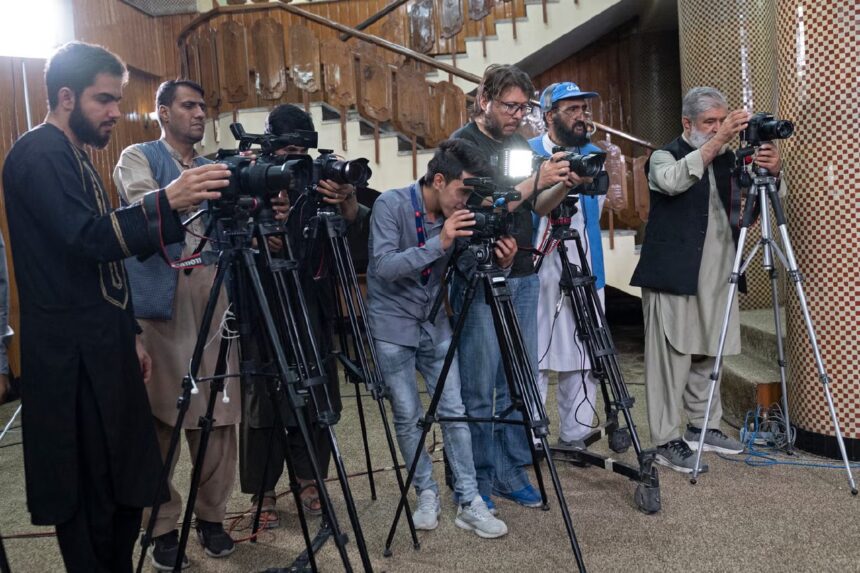RASC News Agency: The Afghanistan Journalists’ Center has sounded the alarm as Bamyan becomes the latest province to fall under the Taliban’s intensifying media censorship regime. The Taliban’s so-called Ministry for the Promotion of Virtue and Prevention of Vice has officially prohibited the capturing and dissemination of images depicting living beings, adding Bamyan to the growing list of 15 provinces now subjected to this repressive decree. This decision was formally announced during a high-level meeting on April 16, led by Mawlawi Abdullah Sarhadi, the Taliban-appointed governor of Bamyan, and attended by representatives of various provincial departments. The ban, enforced under Article 17, Clause 3 of the Taliban’s rigid code of morality, exemplifies the group’s determination to eliminate visual storytelling and suppress independent journalism across the country.
The Afghanistan Journalists’ Center expressed grave concern over the decision, warning that this expanding policy of erasure threatens not only press freedom but the very right of Afghanistani citizens to access truthful and uncensored information. The Center emphasized that such restrictions are “devastating to journalistic practice and societal transparency,” particularly in regions where photography and videography are often the only means of documenting abuses or relaying humanitarian needs. “This is not about religious principles it is about absolute control,” the Center stated. “By banning imagery, the Taliban are silencing human expression and eliminating the visual record of their oppressive rule.”
The ban on live images has already been enacted in numerous provinces, including Badakhshan and Kunduz, as part of a broader campaign of intimidation and repression that has flourished since the Taliban’s return to power in August 2021. Over the past three years, the group has systematically dismantled Afghanistan’s once-vibrant media landscape through enforced censorship, targeted harassment of journalists, arbitrary detentions, and forced closures of independent outlets. In provinces such as Bamyan long celebrated for their cultural diversity and historic resistance to extremism the Taliban’s actions are not merely authoritarian but symbolic: a campaign to erase visibility, identity, and dissent. The region’s painful memory of the Taliban’s destruction of the Buddhas of Bamyan in 2001 now echoes in the erasure of its modern storytellers.
While the Taliban attempt to justify these bans under the pretext of Islamic virtue, critics argue that their true motive is to shield their brutality, incompetence, and gender apartheid from international scrutiny. By cutting off the country’s visual communication channels, the Taliban are systematically isolating Afghanistan from the global community and extinguishing any remaining platforms for accountability. Media and human rights organizations have called upon the international community not only to condemn these actions but to support Afghanistani journalists and media professionals who continue to report under the threat of violence. As information becomes increasingly restricted, the role of exile-based news outlets and digital platforms grows ever more vital in documenting the reality of Taliban governance.
The Taliban’s war on information is not just a domestic tragedy it is a global concern. Silencing Afghanistani voices endangers not only democracy in Afghanistan but the very notion of truth in times of authoritarian resurgence.






